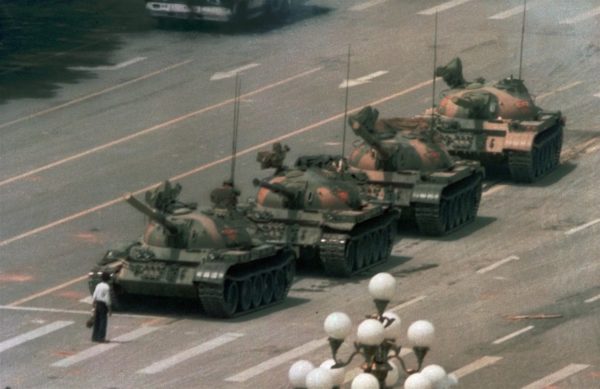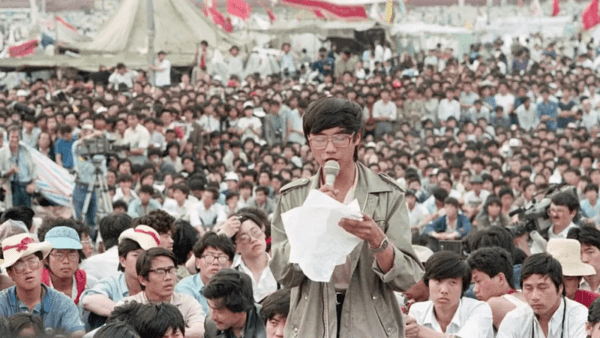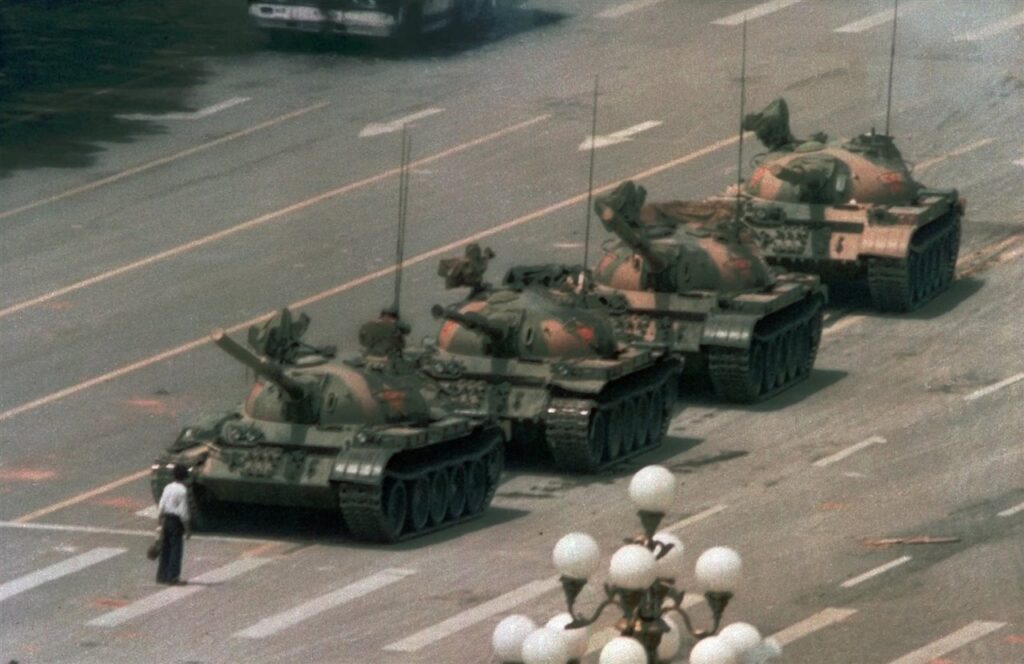
By Javier Herrera
HAVANA TIMES – It was June 5, 1989, and a solitary man, armed only with two shopping bags, stood in front of an entire column of T59 war tanks from the Army of the People’s Republic of China. With a resolute gesture, he made the universal signal to stop with his hand raised. After the war machine could not bypass him and the deadly column halted, the man climbed onto the lead tank and conversed with one of the crew members. Soon, plainclothes agents detained the brave man and took him away to an unknown location. To this day, he is known only as “The Tank Man” or “The Unknown Rebel,” as he was named by Time magazine, which included him as one of the 100 most influential people of the 20th century.
The image at the top of this article was captured on June 5, 1989, by four photographers from the balconies of the Beijing Hotel, 200 meters from the square, with the most famous one taken by Jeff Widener (US) for the Associated Press. Widener had to hide the film to avoid a police search that could confiscate all photographic material that could serve as evidence, as had happened the night before with material on the repression of student demonstrators. After evading the police, he managed to get the images to his office by the end of the day, and in this way, the world learned about the terrible events unfolding.

The protests occurred in the context of economic growth due to the economic liberalization policies implemented since the late 1970s by China’s President Deng Xiaoping. In the mid-1980s, university students and other sectors dissatisfied with the authoritarianism and corruption of Chinese communism began to demand political freedoms and social and individual rights.
In 1987, the General Secretary of the Chinese Communist Party, Hu Yaobang, was forced to resign for being considered unable to control the student protests. Soon, the students adopted the deposed leader as a symbol and began a series of hunger strikes and demonstrations that were supported by broad sectors of the population.
The climax was reached when the students, camped in Tiananmen Square, paid tribute to Hu Yaobang, who had died of natural causes, by inaugurating a statue called “The Goddess of Democracy” in the square, right in front of an immense portrait of the Supreme Leader of the People’s Republic of China, Mao Zedong.
Tyrannies fear symbols and ideals. In the name of symbols and ideas, people go to the ultimate consequences, they sacrifice themselves. The student challenge exceeded the tolerance of the Chinese regime, which, facing the dilemma of moderation and dialogue or intolerance and repression, chose the latter.
On the night of June 3, the limitless repression began. One of the most powerful armies in the world marched against students armed with stones, Molotov cocktails, and ideas, with all the rage despots exhibit against rebellious people. Not content with firing i


